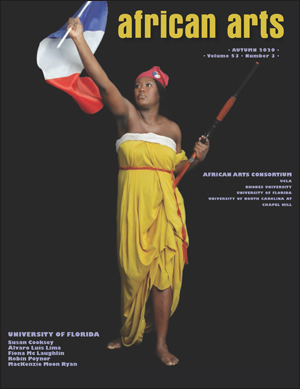News
/ Forschung
Publication: The Moving Parts in Michèle Magema's Body of Work

Lesley Nicole Braun discusses the fragmented images of women in Michèle Magema's work. The article considers the artist's practice and her explorations of local understandings of circulating femininity, power, and leadership.
Abstract
Over the past two decades, Michèle Magema has produced a body of work that is centered upon gender, power, and the nation, providing a counterpoint to the male-dominated contemporary artistic expressions created in and about the Democratic Republic of Congo. Her multimedia work reflects not only the machinations of state-level patriarchal power, but also women's positions within and outside it. The fragmented images of women, their disjointed moving parts which themselves create new formations, are potent reminders of the country she left behind. Magema's figurative imagery treats bodies as constitutive elements of memory and consciousness—the spectral lines of her personal history are remarkably present. While she does not shy away from engaging with the notion of global feminisms—in 2007, Magema shared a selection of her work at the Brooklyn Museum of Art's show Global Feminisms—she also challenges the impulse to universalize women's experiences. In addition to museum exhibitions at the Rochechouart Museum of Contemporary Art, the Royal Museum for Central Africa (RMCA), and the Malmö Konsthall, as well as gallery shows in Brussels, Paris, Berlin, and Seoul, her work has been featured at both the Lubumbashi and Dakar Biennials. This article considers Michèle Magema'a artistic practice and her explorations of local understandings of circulating femininity, power, and leadership.

